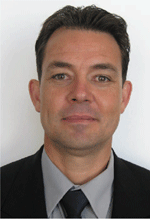Blue hydrogen production: a case study to quantify the reduction in CO2 emission in a steam methane reformer based hydrogen plant
Niel Kritzinger A E , Ravi Ravikumar B , Sunil Singhal C , Katie Johnson D and Kakul Singh CA The Atrium, 168 St Georges Terrace, Perth, WA 6000, Australia.
B 3 Polaris Way, Aliso Viejo, CA 92656, USA.
C 6th Floor, Infinity Tower B, DLF Cyber City, DLF Phase II, Gurgaon-122002, Haryana, India.
D 3 Polaris Way, Aliso Viejo, CA 92656, USA.
E Corresponding author. Email: Niel.Kritzinger@fluor.com
The APPEA Journal 59(2) 619-623 https://doi.org/10.1071/AJ18164
Accepted: 19 March 2019 Published: 17 June 2019
Abstract
In Australia, and globally, hydrogen is primarily produced from natural gas via steam methane reforming. This process also produces CO2, which is typically vented to the atmosphere. Under this configuration, the hydrogen produced is known as grey hydrogen (carbon producing). However, if the CO2 from this process is captured and stored after it is produced, the hydrogen product is CO2-neutral, or ‘blue hydrogen’. To enable production of blue hydrogen from existing natural gas steam methane reformers (SMRs) in Australia, gasification of biomass/bio waste can be utilised to produce fuel gas for use in a SMR-based hydrogen plant, and the CO2 in the shifted syngas can be removed as pure CO2 either for sequestration, enhanced oil recovery, or enhanced coal bed methane recovery. Australian liquefied natural gas that is exported and utilised as feedstock to existing SMRs in other countries can incorporate carbon emission reduction techniques for blue hydrogen production. The use of bio-derived syngas as fuel will generate hydrogen with only bio-derived CO2 emissions. Additional carbon credit can be obtained by replacing petrol or diesel consuming automobiles with fuel cell vehicles powered by hydrogen derived from gasification of biomass.
Keywords: biomass, carbon capture and storage (CCS), enhanced coal bed methane recovery (ECBM), enhanced oil recovery (EOR), fuel cell vehicles, gasification, municipal solid waste (MSW), steam methane reformer (SMR).

Niel Kritzinger is a Principal Process Engineer and a Fluor Australia Process Technology Lead. He has 25 years’ relevant industry experience, of which 17 years have been with Fluor. He has represented Fluor on client sites for a significant portion of his career, where he worked with and on client teams as Lead Process Engineer. He holds a Bachelor’s degree in Chemical Engineering from the University of Pretoria in South Africa. |

Ravi Ravikumar holds a Bachelor’s degree in Chemical Engineering from University of Madras and a Master’s degree from Clarkson University, USA. He is an Executive Process Director with Fluor with 45 years’ experience in variety of gasification and syngas related projects and is the Fluor Technology Group Leader for gasification/syngas. |

Sunil Singhal holds a Bachelor’s degree in Chemical Engineering from Indian Institute of Technology, Delhi, India. He is a Process Engineer and Fluor Fellow in Gasification and Syngas applications at Fluor Daniel India Pvt. Ltd and has over 15 years of industry experience. He has vast experience in gasification, petroleum refinery, fertiliser and chemical industries, covering licensor evaluation and selection, conceptual studies, basic and detailed engineering, process economics, proposal development, scope definitions, developing budgets and schedules, de-bottlenecking, troubleshooting and plant performance monitoring. |

Katie Johnson holds a Bachelor’s degree in Chemical Engineering from Northwestern University in Illinois, USA. She is a Process Engineer with Fluor with 3 years of industry experience in gasification, reforming and syngas technology projects. |

Kakul Singh holds a Bachelor’s degree in Chemical Engineering from Indian Institute of Technology, BHU, Varanasi, India. She is a Process Engineer at Fluor Daniel India Pvt. Ltd with over 6 years of industry experience. She has worked on several gasification, petroleum refinery and petrochemical industries projects. |
References
Alvarez, C. (2017) Oil Reserves Associated with IOR Projects: Recommendations for the Design of Pilot Tests. Available at http://gaffney-cline-focus.com/optimal-design-pilot-tests-english [verified 8 February 2019].Climate Change Connection (n.d.). CO2 Equivalents. Available at https://climatechangeconnection.org/emissions/co2-equivalents/ [verified 22 May 2019]
Intergovernmental Panel on Climate Change (IPCC) (2018). Global Warming of 1.5°C. Available at https://www.ipcc.ch/sr15/ [verified 8 February 2019].
Kumar, S., Gaikwad, S. A., Shekdar, A. V., Kshirsagar, P. S., and Singh, R. N. (2004). Estimation method for national methane emission from solid waste landfill. Atmospheric Environment 38, 3481–3487.
| Estimation method for national methane emission from solid waste landfill.Crossref | GoogleScholarGoogle Scholar |
Robertson, E. P. (2010). Enhanced Coal Bed Methane Recovery and CO2 Sequestration in the Powder River Basin. Available at https://inldigitallibrary.inl.gov/sites/sti/sti/4536713.pdf [verified 10 April 2019]
Wikipedia (2019) Enhanced oil recovery. Available at Wikipedia https: //en.wikipedia.org /wiki/Enhanced_oil_recovery [verified 11 February 2019]


